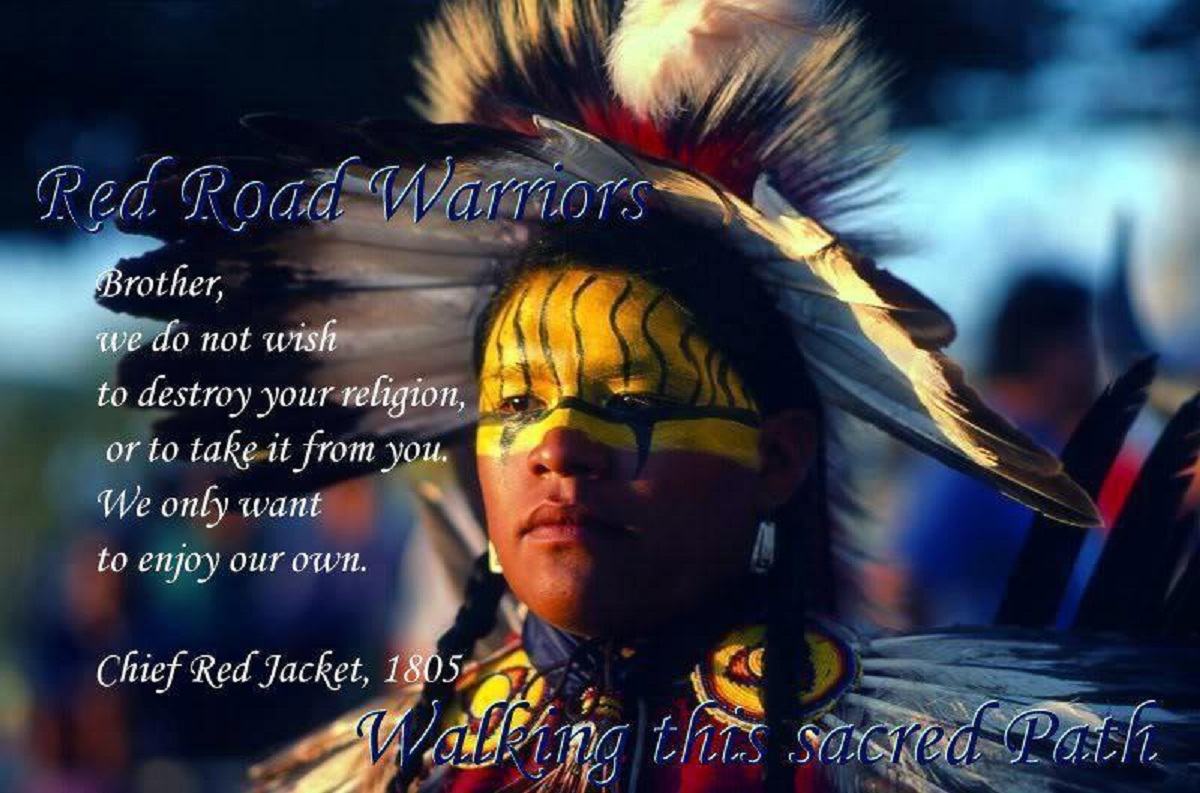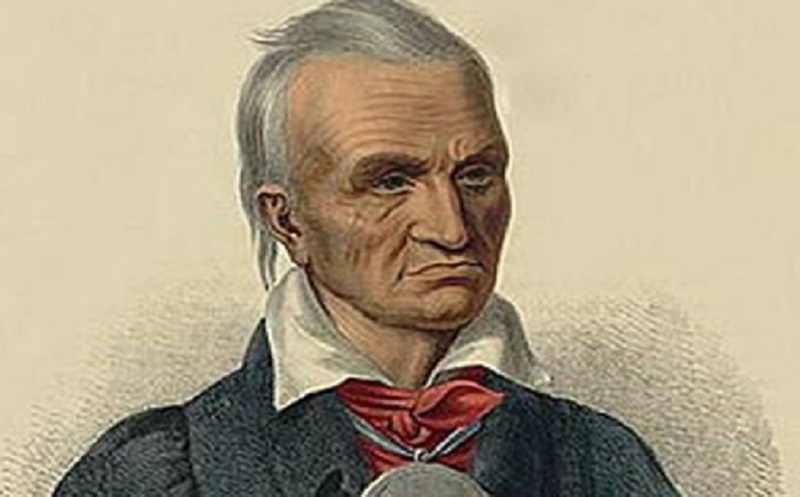Red Jacket, also known as Sagoyewatha, was a prominent leader of the Seneca Nation in the late 18th and early 19th centuries. Born around 1750 in the Seneca village of Canoga, Red Jacket rose to fame as a skilled orator and diplomat, known for his ability to negotiate with both Native American and European leaders. Throughout his life, Red Jacket fought to defend Native American sovereignty and rights, advocating for peaceful relations between the Seneca Nation and the United States. This article explores the remarkable life of Red Jacket, his impact on Native American history, and his legacy as a champion of indigenous people's rights.
Red Jacket's Honor
- Red Jacket Day Celebrations in Western New York
Biography of Red Jacket (1750-1830)
Red Jacket, whose Seneca name was Sagoyewatha, was a prominent Native American leader of the late 18th and early 19th centuries. He was born in 1750 in the Finger Lakes region of present-day New York State and lived most of his life in the Seneca Nation's homeland.
1. Early Life and Tribal Background
Red Jacket was born into the Wolf Clan of the Seneca Nation, one of the Six Nations of the Haudenosaunee Confederacy. His father was a prominent war chief, and Red Jacket grew up immersed in Seneca culture and traditions. As a young man, he became a skilled orator and warrior, earning a reputation as a fierce defender of his people's rights.
2. Red Jacket's Role in the American Revolutionary War
During the American Revolution, the Seneca Nation allied with the British, believing that they offered the best chance to protect their land and sovereignty. Red Jacket fought in several battles against the Continental Army and was wounded in combat. However, he also served as a diplomat, negotiating with American and British officials in an attempt to secure favorable terms for his people.
3. Advocate for Native American Rights
After the war, Red Jacket became a vocal opponent of land cessions to the United States government. He delivered powerful speeches and wrote essays defending Native American sovereignty and their right to self-determination. He also met with political leaders, including George Washington, to advocate for his people's interests.
4. The Treaty of Canandaigua and Red Jacket's Diplomatic Efforts
Red Jacket played a significant role in the Treaty of Canandaigua, a landmark agreement between the United States government and the Haudenosaunee Confederacy. He helped negotiate the terms of the treaty, which recognized the sovereignty of the Six Nations and established a framework for peaceful coexistence with the United States.
5. Red Jacket's Conversion to Christianity and Controversy within the Seneca Nation
In later life, Red Jacket converted to Christianity, a decision that drew criticism from some members of the Seneca Nation. He defended his beliefs, arguing that Christianity and Seneca traditions were not incompatible but instead complementary. His conversion reflected his desire to find ways to protect Seneca culture and sovereignty in a rapidly changing world.
6. Legacy and Impact on Native American History
Red Jacket is remembered as one of the most significant Seneca leaders of his time, renowned for his diplomatic skills and powerful oratory. His work to defend Native American rights and sovereignty has inspired future generations of leaders and activists, and his legacy continues to resonate in modern Native American movements.
7. Notable Quotes and Speeches by Red Jacket
Red Jacket was renowned for his eloquence and powerful speeches. Some of his most famous quotes include:
- "We Are All Brothers"
- "The Great Spirit Has Made Us All"
- "Our Territory is That of the Eagle"
8. Commemoration and Memorials in Honor of Red Jacket
Red Jacket's legacy has been remembered in various ways, including the naming of towns and places in his honor, such as Red Jacket, New York. Several monuments and statues commemorate his life and achievements, including one in Buffalo, New York. Red Jacket Day, celebrated every year on September 15th in Western New York, is dedicated to honoring his contributions to Native American history.In conclusion, Red Jacket's contributions to Native American history and culture are immeasurable. As a warrior, diplomat, and advocate for his people, he dedicated his life to defending Seneca sovereignty and promoting peaceful relations between indigenous people and Europeans. Red Jacket's legacy continues to inspire Native American leaders and activists today, reminding us of the importance of preserving and celebrating indigenous cultures and traditions.
FAQ
Who was Red Jacket?
Red Jacket, also known as Sagoyewatha, was a Seneca leader born in 1750 in New York State. He was a prominent diplomat, skilled orator, and advocate for Native American rights and sovereignty.
What was Red Jacket's role in the American Revolutionary War?
During the American Revolutionary War, the Seneca Nation aligned with the British, and Red Jacket played a crucial role as a warrior and diplomat. He negotiated with British officials and helped lead battles against the Continental Army.
What was the Treaty of Canandaigua, and what was Red Jacket's role in it?
The Treaty of Canandaigua was a treaty signed in 1794 between the United States government and the Six Nations of the Iroquois Confederacy, including the Seneca Nation. Red Jacket played a significant role in the treaty negotiations, defending Native American sovereignty and securing rights for the Seneca people.
What was Red Jacket's legacy?
Red Jacket's legacy as a champion of Native American rights and sovereignty is still celebrated today. He is remembered as a skilled diplomat and orator and a symbol of the resistance against colonization and oppression. Red Jacket's speeches and writings continue to inspire indigenous people and activists around the world.
_______________________
Significant Battles
Red Jacket (also known as Sagoyewatha or Otetiani) was a Seneca orator and chief who fought on the side of the British during the American Revolutionary War and later became an influential leader among the Iroquois people. Although the specific battles in which he participated are not well-documented, it is known that he fought in several significant engagements during the American Revolutionary War (1775-1783).
Some of the important battles involving the Iroquois Confederacy and their British allies during this time period include:
-
Battle of Oriskany (August 6, 1777) – An engagement in which British forces, Loyalists, and Iroquois allies attempted to halt the advance of the American Continental Army in upstate New York. The exact involvement of Red Jacket in this battle is uncertain, but it is possible that he took part in it, as the Seneca were known to be active in the region.
-
Cherry Valley Massacre (November 11, 1778) – A coordinated attack by Loyalists and Iroquois forces, including the Seneca, on the American settlement at Cherry Valley in New York. The attackers killed more than 30 settlers and took over 70 prisoners. It is unclear whether Red Jacket took part in this specific event, but it is likely that he was involved in similar raids during the war.
-
Battle of Newtown (August 29, 1779) – A decisive American victory against the combined forces of Loyalists and Iroquois warriors in present-day Elmira, New York. Red Jacket may have participated in this battle, which led to a decline in Iroquois power in the region.
As for Red Jacket's trusted warriors, it is difficult to identify specific individuals who served under him, as there are few historical records documenting the names of the Seneca warriors who fought alongside him. However, it is likely that he had several trusted lieutenants and warriors who were members of the Seneca tribe or other parts of the Iroquois Confederacy.
______________________
Red Jacket (known as Otetiani in his youth and Sagoyewatha(Keeper Awake) Sa-go-ye-wa-tha after 1780 because of his oratorical skills) (c. 1750–January 20, 1830) was a Native American Seneca orator and chief of the Wolf clan. He negotiated on behalf of his nation with the new United States after the American Revolutionary War, when the Seneca as British allies were forced to cede much land, and signed the Treaty of Canandaigua (1794). He helped secure some Seneca territory in New York state, although most of the people had migrated to Canada for resettlement after the defeat of the British.
His talk on "Religion for the White Man and the Red" (1805) has been preserved as an example of his great oratorical style.

http://en.wikipedia.org/wiki/Red_Jacket
